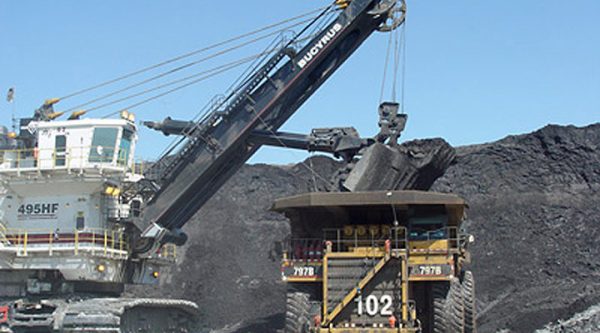50 years on: Kamandama Mine disaster victims remembered

SOUTH Africa-based Mr Hilton Papenfus whose father was a manager at Hwange Colliery Company when a string of underground gas explosions killed 427 miners, his parent included, was in the mining town yesterday on a day of remembrance.
They died in a 5km-tunnel shaft at the then Wankie Colliery’s Number 2 shaft known as Kamandama.
Yesterday marked exactly 50 years since the Kamandama Mine disaster.
It remains the worst mine disaster in the country’s history and every June 6, commemorations are held to honour the miners.
Mines and Mining Development Minister Winston Chitando, Matabeleland North Provincial Affairs and Devolution Minister Richard Moyo, mine workers, local chiefs and security officers also attended the meeting.
Mr Papenfus told Chronicle that his father died at the age of 40 and he received the sad news
when he was at Plumtree High School doing Form One. “I came here with my wife Gillian, my sister who was 12 years when the incident struck and my son.
We came all the way from South Africa to remember my father.
It is a way of reconnecting with my father and making sure we do not forget him.
Let us continue doing this so that future generations do not forget,” he said.
Mr Papenfus said this has to be a legacy for the mining industry.
“We were lucky in that our mother was employed otherwise we were not going to survive.
We never received any cash injection from the company,” said Mr Papenfus.
Speaking during the commemorations, Minister Chitando said Government has come up with a raft of mining initiatives which are supposed to be followed by all mining companies to avert disasters.
Mines and Mining Development Minister Winston Chitando
“Responsible mining initiatives mean all mining activities should conform to the laws of the country.
In observing the laws of the country, this also includes observing responsible mining, which entails observance of the highest standards of safety,” he said.
“We want to ensure that we do not have any mining disasters in our mining activities and good environmental practices in the extraction of all minerals.”
Minister Chitando said the initiative also demanded observance of migration laws, paying taxes, production through recognized channels, and ensuring paying workers according to the stipulated rates set by the National Employment Council.
He said the safety initiatives should be extended to all other sub sectors in the mining sector.
Minister Chitando lauded Hwange Colliery Company for maintaining high safety standards in mining through investing in advanced technology.
“Hwange Colliery Company has implemented a lot of world class safety standards which they should continue to improve.
Since the Kamandama Mine disaster, the company has since re-examined the way it operates by making sure that particular attention is made on safety,” he said.
Minister Chitando said the coal mining sector plays a critical role in the development of the country.
“His Excellency, President Mnangagwa came up with the 2030 vision to ensure that Zimbabwe becomes an upper-middle income economy and this entails various sectors contributing towards this vision.
Zimbabwe is on course to achieve the US$12 billion mining industry target by 2023 from a base of US$2,7 billion in 2018,” he said.
“At the base of the onset of the US$12 billion, coke which was being produced in the country was about 280 000 tonnes per annum tonnes and now we are producing 2 million tonnes per annum.
This is premised on the new power stations coming in at Hwange Power Station including additional power stations to be established in the Hwange and Binga areas.”
Hwange Colliery Company administrator Engineer Dale Sibanda said the mine has committed itself towards improving the safety of miners through investing in technology that meets international standards.
“Hwange Colliery Company is in a position to monitor its mine safety procedures as a way to mitigate any disasters that may occur.
Since the disaster, the company has been investing in advanced technology to ensure that the utmost safety standards are adhered to,” he said.
“We have since abandoned the drill and blast method of underground mining for secure equipment such as the continuous miner.
We also observe high standards of safety during underground operations such as disallowing the use of contraband or use match sticks.”
During the commemorations, widows who were clad in tailor-made attire emblazoned with Hwange Colliery Company logos, released white balloons into the air, symbolising their departed loved ones.
In interviews, the widows said the company only remembers them during the annual commemorations.
Other things we get once in a while include pots, plates and cups,” said Ms Senzeni Phiri.
Ms Phiri, who lost her husband when her son, Mr Tapedza Makava was only two years old, said her wish was for the company to either give them monthly allowances or increase the annual payment figure.
Mr Makava said he only learnt that his father was a victim of the disaster when was in Grade Four.
He appealed to the coal mining company to increase his mother’s allowances
“I struggled with my education because my mother wasn’t employed.
In fact, I was a beneficiary of the Kamandama Mine disaster until the age 18 years after which my mother had to struggle with my education,” he said.


